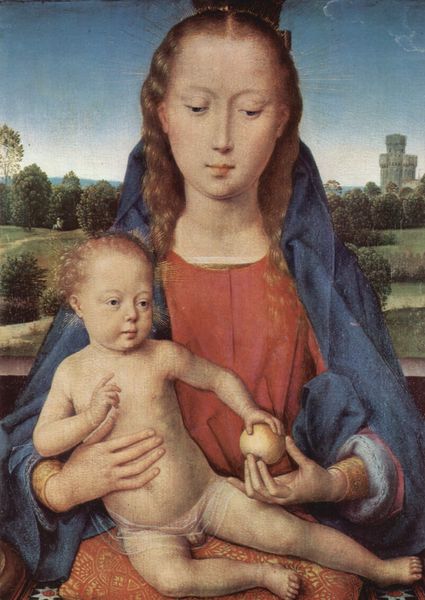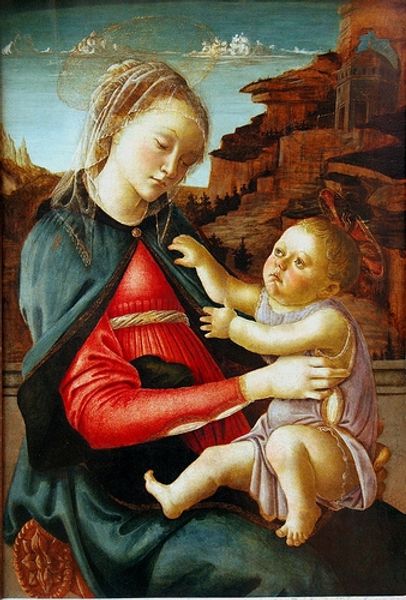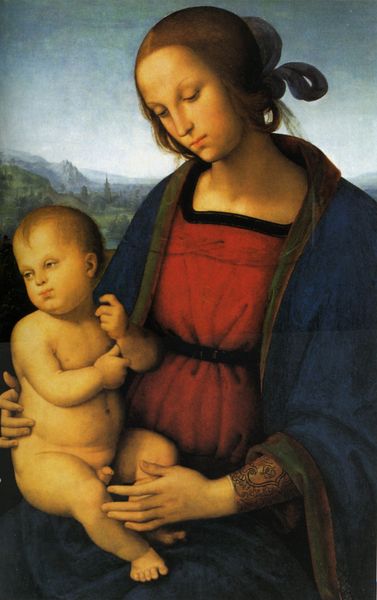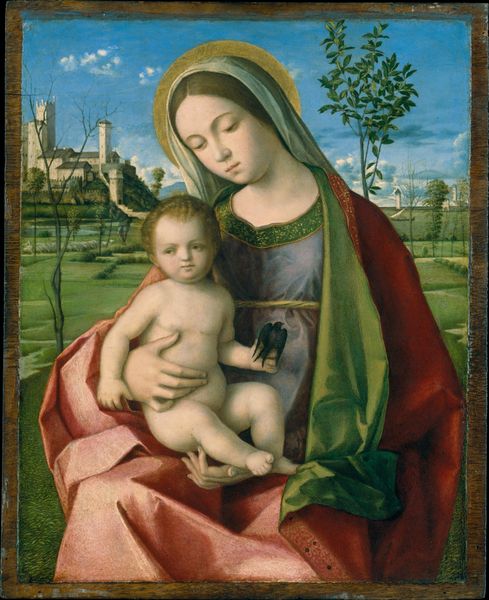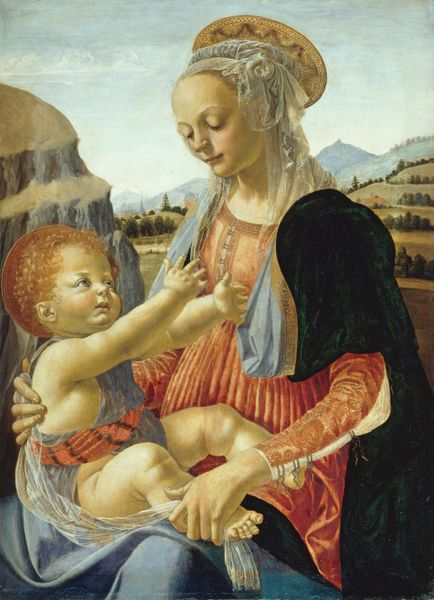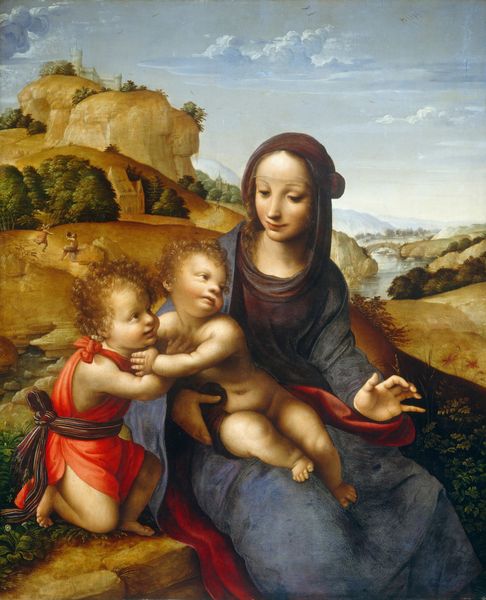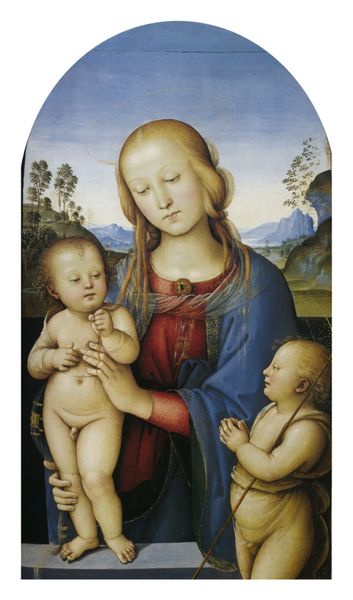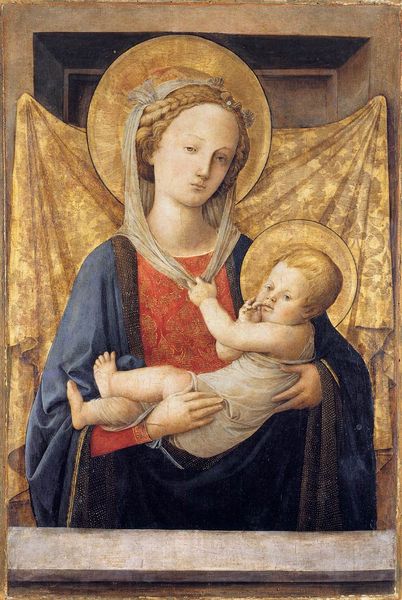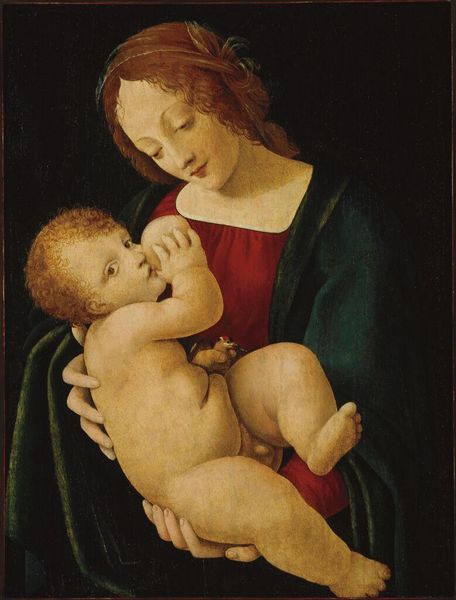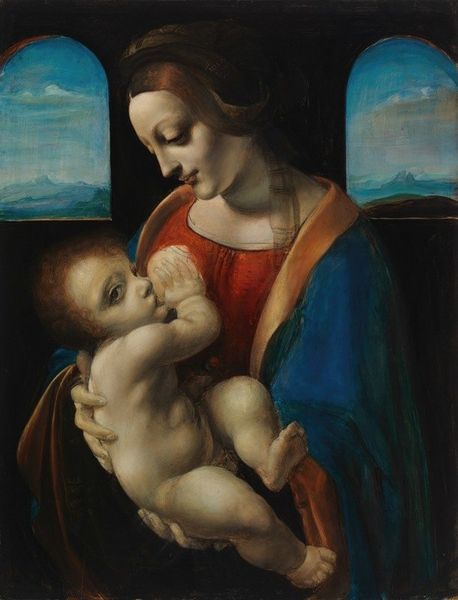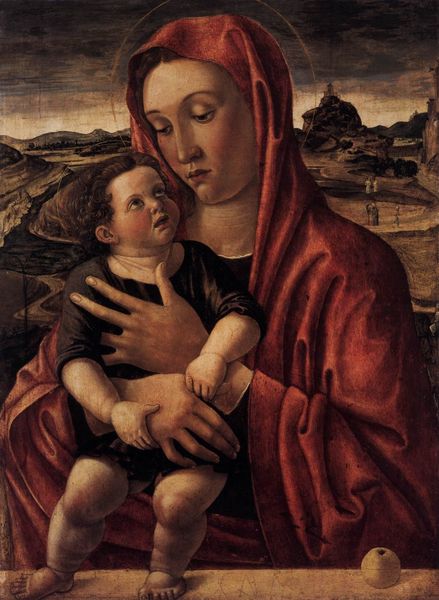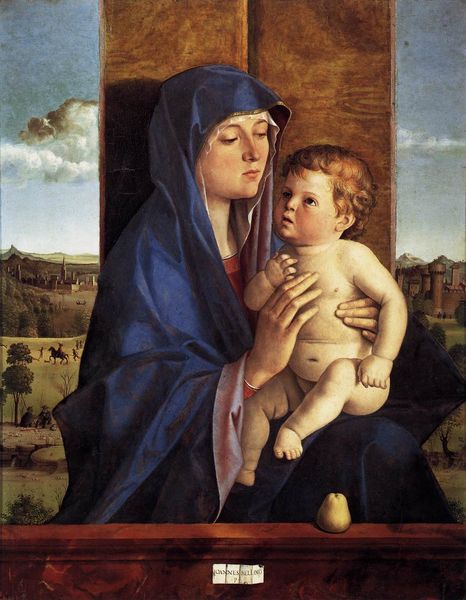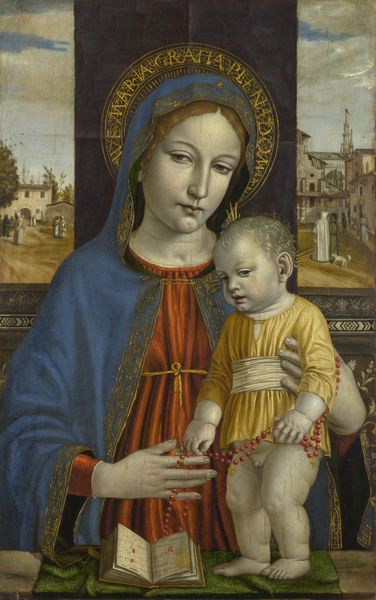
painting, oil-paint
#
portrait
#
high-renaissance
#
painting
#
oil-paint
#
figuration
#
oil painting
#
history-painting
#
italian-renaissance
#
virgin-mary
#
christ
Dimensions: 33 x 42 cm
Copyright: Public domain
Editor: Here we have Leonardo da Vinci's "Madonna Litta," painted around 1490. It’s an oil painting, and it strikes me as so serene and classically composed. What's your interpretation? Curator: Indeed. Notice how da Vinci uses light and shadow? Not just to model form, but to create an emotional landscape. Consider, too, the Madonna's gaze – downward, protective. Where have we seen that specific rendering of motherhood depicted previously? Think Byzantine Madonnas or, earlier, Isis suckling Horus. There is an echo here, wouldn’t you agree? Editor: I do see that link now, that maternal tenderness preserved and presented throughout time. But how do we know what Leonardo intended when choosing certain motifs? Curator: Art rarely exists in a vacuum. Leonardo, a man of his time, inherited a visual language steeped in religious and cultural symbolism. While he undeniably innovated, he also drew upon this pre-existing vocabulary to convey deeper meanings. Milk, for instance, speaks to divine nourishment. What do the open windows represent, do you think? Editor: Perhaps offering glimpses into a sacred space and beyond, almost heavenly? Curator: Precisely. This intimate portrait, while seemingly simple, speaks volumes about humanity’s continuous dialogue with its beliefs and ideals. Seeing this type of symbolic lineage makes you aware of time not as linear, but cyclical, always referring back to fundamental emotions and themes. Editor: It gives me a sense of connection with past cultures through shared visual meanings. Thanks for the insight!
Comments
No comments
Be the first to comment and join the conversation on the ultimate creative platform.
